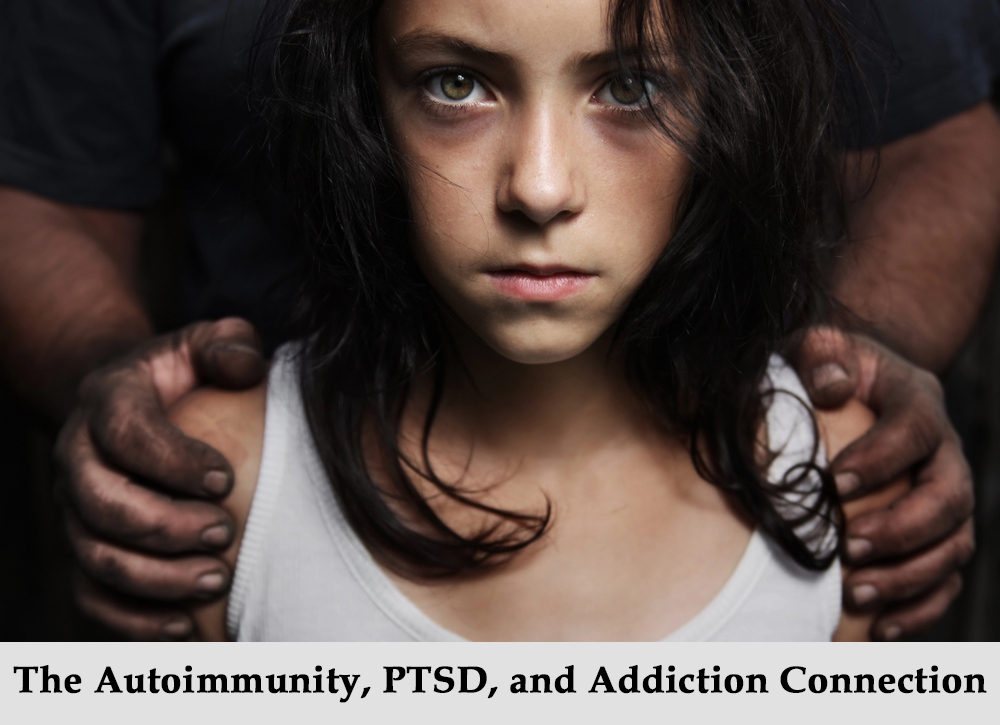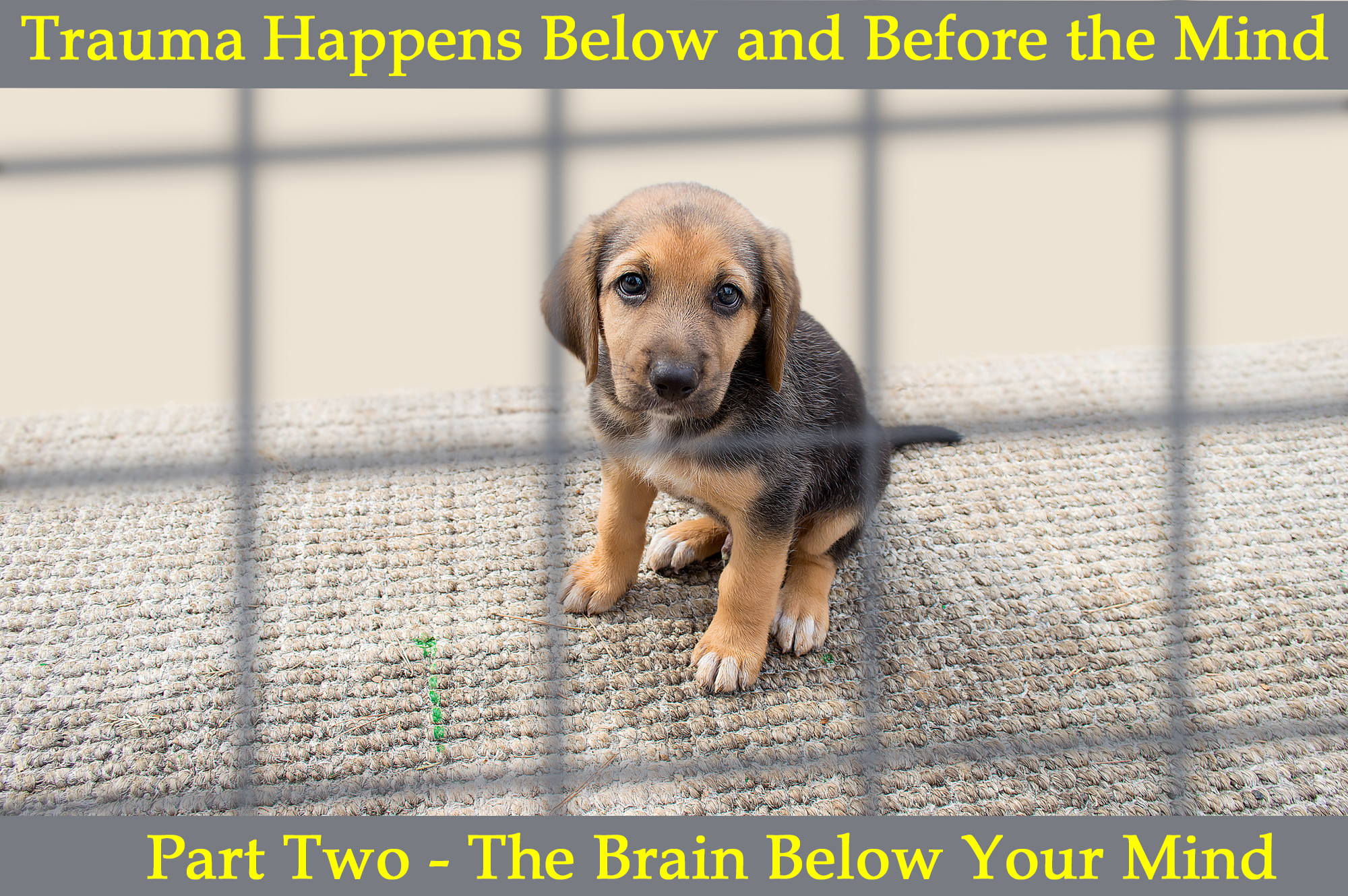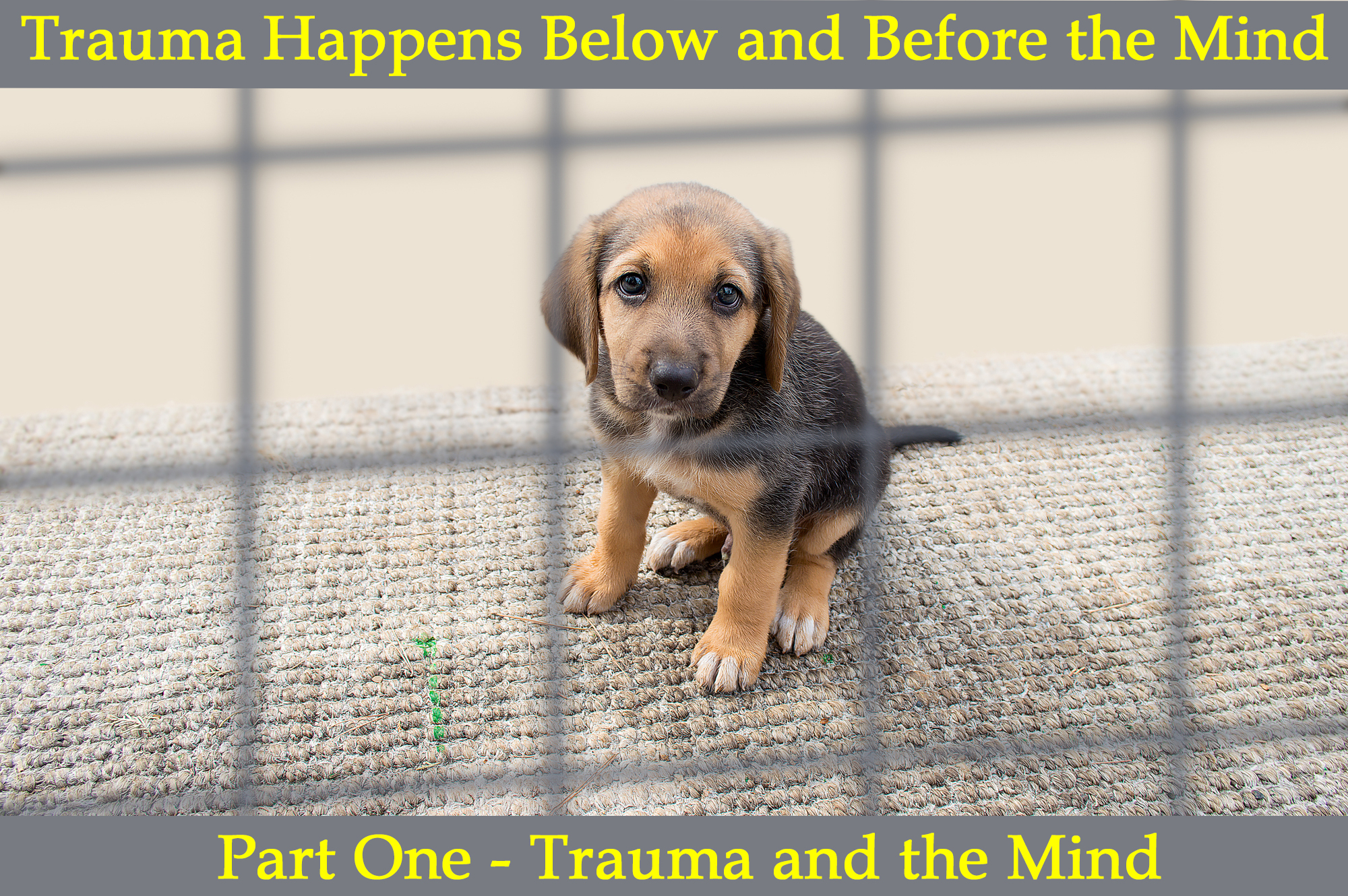Are Autoimmunity, PTSD, and Addiction Connected?
Do you like common sense answers for complicated problems?
I feel the same way!
In fact, it is my passion to take complex health problems and whittle them down until I understand the most important functions or relationships, and then focus on the most common sense solutions.
Autoimmunity has been on the rise for the last 50 years. At present, one in five people suffer with some form of Autoimmune Dysfunction. The general consensus is that almost 200 conditions are genetic in origin. Chemical immune suppression and relief care are the only choice. Other clinicians, myself included, advocate for a nutrient dense diet that is low in anti-nutrients (see <?>). The focus is only on the front line of the immune system.
Chronic distress and trauma are at the root of at least 80% of modern chronic illness. Not only, because of the physiology of constant stress, but because of the negative impacts of a stimulant, intoxicant, sedentary, and disconnected lifestyle. At present, 35% of people (adults and children) are experiencing substance abuse patterns. Addiction is a profoundly challenging experience to be in and difficult beyond words to heal from and through.
Humanity is facing a Mental Health crisis. I know that is a challenging thing to hear or consider. As a clinician with 30 years experience, I have watched the statistics constantly get worse, and talked with thousands of unique individuals whose sense of overwhelm has increased even with a healthy lifestyle.
Here is a podcast about the Connection between Autoimmunity, PTSD and Addiction. (It is about 6 years old). In this episode, we take you on a short tour through Autoimmunity, PTSD, and Addiction.
image fusion<?>
For the rest of this article, I will use the analogy (from the podcast) of a new ‘doctor patient interaction TV show’ to explore some obvious and some subtle connections between Autoimmunity, PTSD, and Addiction.
I have a theory about modern life and modern health.
I use the term Adaptive Overstain, but my theory has to do with the relationship between chronic illness, trauma and addiction.
The essence of this theory is not complicated, but it will ask you to look at your health and at your health care in an unconventional way. If you are a clinician, you will probably be nodding your head in agreement. This is just common sense, after all.
Or, as a clinician, you may be clenching you fists in righteous fury and indignation at my suggestion that a diagnosis is often very distracting from actually helping people heal their bodies and their lives.
As patients and as doctors, we all just want an answer. Please join me in an exercise of imagination for a few minutes.
It may help with asking the right questions.
Imagine for a moment that you and I are going to write and produce a TV show. It is going to be one of those doctor and patient action drama shows. You know the ones where some doctor figures things out just in time by remembering some rare detail from a textbook. We are going to need a character that is personally flawed enough to relate. They will need a Sherlock Holmes like talent for deductive reasoning and an elephant’s memory for the rare and weird aspects of medicine. If we can come up with enough hair-raising life or death scenarios, minus the guns and aliens, we will have hit.
This part of medicine is pretty cool. It saves lives every single day in every ER (Emergency Room) and ICU (Intensive Care Unit). Watching a show about these heroic moments is very engaging, especially if you, or someone you know has a complex, chronic and poorly understood illness.
We all pray for that kind of doctor/detective when things get serious.
What if our TV show focused on actually solving chronic illnesses – not just treating symptoms?
In our TV show’s first episode we have three patients.
Patient A has Ankylosing Spondylitis (a connective tissue disorder that usually attacks your vertebrae and sacrum).
Patient B is a combat veteran with complex PTSD.
Patient C is addicted to pain killers and sleeping pills.
It is day one and Patient A comes into our TV version of a doctor’s office to review their lab tests. There are signs of chronic inflammation, nutritional deficiencies, a breakdown of their mucosal membrane, an overgrowth of microorganisms in their small intestine, poor liver function, and their genetic testing shows that this was all inevitable with a modern diet and lifestyle.
Patient B and C have surprisingly similar results. The genetic tests are different but help explain many of their specific symptoms and sensitivities.
Each patient is sent home with an appropriate protocol of an anti-inflammatory diet, supplementation for their deficiencies, to help repair their gut, support their liver, and an understanding of their genetic tendencies towards most of their problems. Not very dramatic, but some damn good science and some hope for the masses.
…This next part is what Hollywood calls ‘the setup.’
It is day two and our three patients are back in the clinic to meet with our show’s quirky acupuncturist who specializes in chronic distress and embodied trauma. Each patient is asked about 50 very personal questions about how they move, breathe, and feel inside their bodies.
Patient A loves how much the acupuncture has helped and is given some daily stretching exercises and some pain relieving breathwork practices. They are also astounded to learn that their nervous system is experiencing the chronic pain as a physical attack, which is making them stressed out and their immune system even more aggressive. They have a long-term choice to reduce stress and gradually reverse the momentum of their condition or go on immune suppressant drugs that will likely do more harm than good in the long term.
They are referred to a group therapy session to integrate what they are learning and to meet others going through the same process.
Patient B has a freak-out on the acupuncture table and cries for an hour curled up on the floor. After they settle back into their body, they learn that the fight, flight, freeze system is meant to have opportunities process trauma – not just react to it. The reason that their lab tests were so dramatic has to do with the biochemistry of living in a state of chronic grief and shock (from a TCM perspective). Their ability to digest food, breathe properly, sleep deeply, or even receive physical touch has been limited by an unresolved physical need to ‘shake-off’ or gradually process all of the biochemistry of their trauma.
They are given an embodied mindfulness practice that balances stillness with martial arts like sudden and explosive movements. They are guided through a breathwork practice that helps them measurably reduce their blood pressure by 20% and asked to walk alone or ideally with a pet for 30 minutes every morning.
They are referred to a group therapy session to integrate what they are learning and to meet others going through the same process.
Patient C fell asleep on the treatment table almost immediately. After a 30 min nap, they wake and say that they hated the acupuncture. It hurt too much and they really think they should get some extra drugs for the next time. They will consider trying all of the woo woo stuff’ when their chronic pain and insomnia improve.
They are referred to a group therapy session to meet others going through the same process and hear some success stories with addiction.
…This next part of good TV show is called the reveal.
It is day three, and it is the last 15 minutes of our first episode.
Excited to see what happens?
Here is the scene. Patients A, B, and C walk into a large room with a circle of chairs. There are a bunch of interesting looking strangers and a wise old frumpy looking psychologist all getting seated and ready.
The first few minutes is a guided meditation. Our valiant and wounded patients are asked to write down what thought, story, or narrative kept intruding on their meditative state.
The next few minutes are a guided movement practice. Everyone is asked to draw their experience on a Somato-Map – or an outline of the body. Each participant draws or scribbles where they felt the most tension, pain, or nervous energy or lack of connection to their body.
After that, our wise Elder talks about Adverse Childhood Experiences (ACE’s) and walks the group through a rough childhood from birth to becoming an autonomous adult. There are a lot of nodding heads and a few tear-filled eyes.
Patient A loved the meditation and found their only thoughts were about what else they were going to do that day to win the Autoimmune war within their body. Their Somato-map was pretty clear. Scribbles up and down their spine and knees were about the pain. A little spiral at their throat and what look like wristbands came out of nowhere.
The conversation about child trauma was hard. Patient A grew up in an impatient, judgmental and hyper-responsible home. No violence, addiction or mental illness to speak of. Just the need to get it right.
Patient B found being surrounded by strangers a little distracting but enjoyed the meditation. Their thoughts kept going back to the consequences of not fixing their physiology and getting all of this right. Their Somato-Map showed chronic neck and shoulder tension with a line across the middle of their abdomen and a big X on their pelvis. Patient B could barely feel their diaphragm and had no connection with their instinctual or sexual aliveness.
The conversation about child trauma made them cry. Patient B grew up in dangerous neighborhood. There was violence and gunfire on the streets and in their house. Addictive behavior was a family tradition but never took over their lives. An Us vs Them mentality was so imprinted on their family that they went off to fight and kill strangers that were supposed to be evil. Patient B wanted to run around in circles and scream and scream but managed to stay in control.
Patient C found the meditation to be like surfing the channels at 3:00 am. Their attention kept leaping to other places to be, other more useful things they could do and especially all they ways they could numb out. Their wrote down, ‘My narrative is what fun can I have after this BS was over.’ The movement practice was fun and distracting until they started to feel like they were going to vomit. Their Somato-Map was mostly just random feelings. While cynically doodling, Patient C drew a spiral at their solar plexus until the pen started going through the paper. They made an audible sarcastic snort and put a big X on their face, heart and genitals. No one home there, there, or there!
When the ‘old hippy’ talked about rough childhoods, Patient C had to physically grab their chair to stop from shaking any harder, vomiting and/or fainting. Patient C was physically, sexually, and mentally abused for most of their childhood. Their family had generations of abuse and addiction. This very wounded person had never made many real friends and to this day had no idea what most people were talking about when it came to love, sex, play, adventure, or creating a secure future. The amount of instinctual, visceral and existential pain that they felt everyday was finally looking them in the face.
And they were facing their pain with empathy for the first time in their entire life…
Final scene: the meeting ends, and the patients are leaving. One by one, the stars of our first episode speak to the old psychologist.
Patient A says, “Thank you so much. I finally get that the way I am solving my problems is the problem.
Patient B says, “Thank you. Do you know of a peaceful place I can go and learn to live in my own skin again?”
Patient C with tears down their face says in a shaky voice. “Thank you. I would like to go into an addiction treatment program. Now! Please…”
Ok, I admit that this would probably never work as a TV show. Hopefully, it does demonstrate my point.
The similarities between patients with an Autoimmune diagnosis, a PTSD diagnosis, and/or an life-threatening Addiction diagnosis are astounding. From the lab tests, to the chronic symptoms of distress, and the social limitations; from the inner somatic turmoil to the instinctual social survival strategies; from the adverse childhood experiences to the existential crisis of how to live a meaningful life.
An Autoimmune, Complex Trauma, and/or Addiction diagnosis are all higher in people who have had to adapt to their lives beyond their capacity. That is obvious but it profoundly changes the approach a patient or clinician needs to bring to resolving the situation. If your diagnosis includes, one, two or all three of these conditions, ask yourself how often you have had to adapt to your life in ways that were too much.
Or, in ways that left you feeling not enough.
The Ancestral Autoimmune Protocol is meant for all three conditions and for the underlying root cause. Adaptive Overstrain or Adaptive Exhaustion.
This approach is not a cure-all, it is an opportunity for you to reconnect to your inner resources in as many ways as you are willing to explore. This book is not just focused on resolving complex health issues, it is also focused on regaining your birthright of adaptability, all while learning the tools to never get burned out again.
This immersive training is intended to be a personal Healing Journey, as well as a clinical certification and continuing education program.
Please let us know if you have any questions.
somadaoqigong@gmail.com
Includes the Foundational Course and an Overview of Treatments, Practices, and Supportive Therapies
Includes the Foundational Course and Clinical Training in Herbology and Acupuncture, Trauma Informed Care, as well as an understanding of how a Personal Qi Gong or Nei Gong Practice supports healing.
There will also be an introduction to Somatic Mindfulness Processing – a form of Counselling and Spiritual Recapitulation.





Leave A Comment